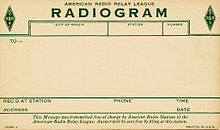
Hiram Percy Maxim was an American radio pioneer and inventor, and co-founder of the American Radio Relay League (ARRL). Hiram Percy Maxim is credited with inventing and selling the first commercially successful firearm silencer, and also with developing mufflers for internal combustion engines.

In the United States and Canada, the Amateur Radio Emergency Service (ARES) is a corps of trained amateur radio operator volunteers organized to assist in public service and emergency communications. It is organized and sponsored by the American Radio Relay League and the Radio Amateurs of Canada.
The amateur auxiliary was an American amateur radio organization operated by the American Radio Relay League between 1994 and 2019 that was authorized by and worked in conjunction with the Federal Communications Commission (FCC). The Auxiliary consisted of official observer volunteer amateur radio operators who monitored amateur radio service frequencies. This was one way in which the FCC encouraged amateur radio operators in the United States to self-police.
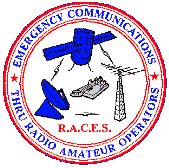
The Radio Amateur Civil Emergency Service (RACES) is an emergency radio service authorized in Part 97.407 of the Federal Communications Commission (FCC) rules and regulations governing amateur radio in the United States.

The International Amateur Radio Union (IARU) is an international confederation of national organisations that allows a forum for common matters of concern to amateur radio operators worldwide, and collectively represents matters to the International Telecommunication Union (ITU). The International Amateur Radio Union was founded in 1925 and, as of July 2021, it is composed of 172 national member societies.

Contesting is a competitive activity pursued by amateur radio operators. In a contest, an amateur radio station, which may be operated by an individual or a team, seeks to contact as many other amateur radio stations as possible in a given period of time and exchange information. Rules for each competition define the amateur radio bands, the mode of communication that may be used, and the kind of information that must be exchanged. The contacts made during the contest contribute to a score by which stations are ranked. Contest sponsors publish the results in magazines and on web sites.
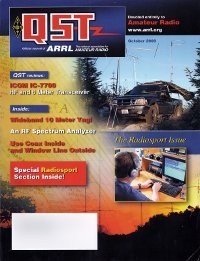
QST is a magazine for amateur radio enthusiasts, published by the American Radio Relay League (ARRL). It is a membership journal that is included with membership in the ARRL. The publisher claims that circulation of QST in the United States is higher than all other amateur radio-related publications in the United States combined. Although an exact number for circulation is not published by the American Radio Relay League, the organization claimed 158,238 members at the end of 2021, almost all of whom receive the magazine monthly, in addition to issues delivered to libraries and newsstands.

In times of crisis and natural disasters, amateur radio is often used as a means of emergency communication when wireline, cell phones and other conventional means of communications fail.

In the United States, amateur radio licensing is governed by the Federal Communications Commission (FCC). Licenses to operate amateur stations for personal use are granted to individuals of any age once they demonstrate an understanding of both pertinent FCC regulations and knowledge of radio station operation and safety considerations. Applicants as young as five years old have passed examinations and were granted licenses.
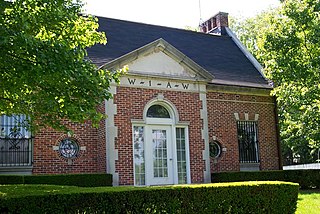
W1AW is both the amateur radio call sign and the primary operating station of the American Radio Relay League (ARRL). This station, which is commonly called the Hiram Percy Maxim Memorial Station, is located on the grounds of ARRL Headquarters in Newington, Connecticut. It was inspired by Maxim's 1AW callsign which predated the use of the AA-AL, K, N and W prefixes. The station routinely transmits bulletins and Morse code practice using common amateur radio frequencies. During a communications emergency bulletins are transmitted hourly in order to keep amateur radio operators informed.

The National Traffic System (NTS) is an organized network of amateur radio operators sponsored by the American Radio Relay League for the purpose of relaying messages throughout the U.S. and Canada.
Winlink, or formally, Winlink Global Radio Email, also known as the Winlink 2000 Network, is a worldwide radio messaging system that uses amateur-band radio frequencies and government frequencies to provide radio interconnection services that include email with attachments, position reporting, weather bulletins, emergency and relief communications, and message relay. The system is built and administered by volunteers and is financially supported by the Amateur Radio Safety Foundation.

Vintage amateur radio is a subset of amateur radio hobby where enthusiasts collect, restore, preserve, build, and operate amateur radio equipment from bygone years, such as those using vacuum tube technology. Popular modes of operation include speaking over amplitude modulation (AM), and communicating using Morse code through continuous wave (CW) radiotelegraphy. Some enthusiasts have interest in owning, restoring and operating vintage military and commercial radio equipment such as those from 1940s to 1960s. Some undertake to construct their own gear, known in ham slang as homebrewing, using vintage parts and designs. A number of amateur radio clubs and organizations sponsor contests, events, and swap meets that cater to this specialized aspect of the hobby.
The Chinese Radio Sports And Orienteering Association (CRSAOA) is a national non-profit organization for amateur radio enthusiasts in the People's Republic of China. The CRSA's primary mission is to popularize and promote amateur radio in China. Early activities of the organization focused on radiosport, and the CRSA was active in promoting Amateur Radio Direction Finding and High Speed Telegraphy competitions throughout the country. Although the CRSA has broadened its scope and now supports many kinds of radio activities, the organization's name continues to reflect this early heritage. Key membership benefits of the organization include QSL bureau services, a quarterly membership magazine called Ham's CQ. CRSA was also responsible for the administration of the amateur radio license certification program in the People's Republic of China until 2010.Former Chinese Radio Sports Association.
An amateur radio net, or simply ham net, is an "on-the-air" gathering of amateur radio operators. Most nets convene on a regular schedule and specific frequency, and are organized for a particular purpose, such as relaying messages, discussing a common topic of interest, in severe weather, emergencies, or simply as a regular gathering of friends for conversation.

Amateur radio, also known as ham radio, is the use of the radio frequency spectrum for purposes of non-commercial exchange of messages, wireless experimentation, self-training, private recreation, radiosport, contesting, and emergency communications. The term "amateur" is used to specify "a duly authorized person interested in radioelectric practice with a purely personal aim and without pecuniary interest"; and to differentiate it from commercial broadcasting, public safety, or professional two-way radio services.
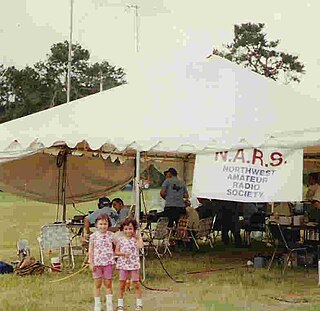
The Northwest Amateur Radio Society (NARS) was established in 1985 and serves the suburban FM 1960 area in Northwest Houston, Texas under the vanity call sign W5NC, an extra-class license issued by the United States Federal Communications Commission (FCC).

Although there is anecdotal evidence of an amateur radio club in Omaha prior to World War II, The Ak-Sar-Ben Amateur Radio Club (AARC), as it exists today, was started in 1945 and has been affiliated with the American Radio Relay League (ARRL) since that time. The club is not affiliated with The Knights of Ak-Sar-Ben.
The QN Signals are Morse code operating signals that were introduced for Amateur radio net operation in 1939 on the Michigan QMN Net to lighten the burdens of net control operators. Originally created by a committee of the Detroit Amateur Radio Association led by Ralph Thetreat, W8FX. Ev Battey W1UE (W4IA-SK), then ARRL assistant communications manager, later printed them in QST.
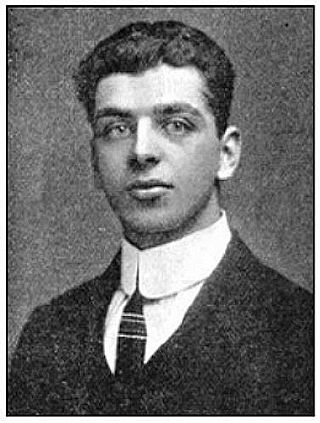
Clarence Denton "C. D." Tuska was an early radio experimenter and amateur operator, who also became one of the first radio receiver manufacturers. He is best known as the co-founder, along with Hiram Percy Maxim, of the American Radio Relay League (ARRL). He was also the original editor and owner of the amateur radio publication QST, which he subsequently sold to the ARRL in 1919, as part of his reorientation toward professional activities within the radio industry.



